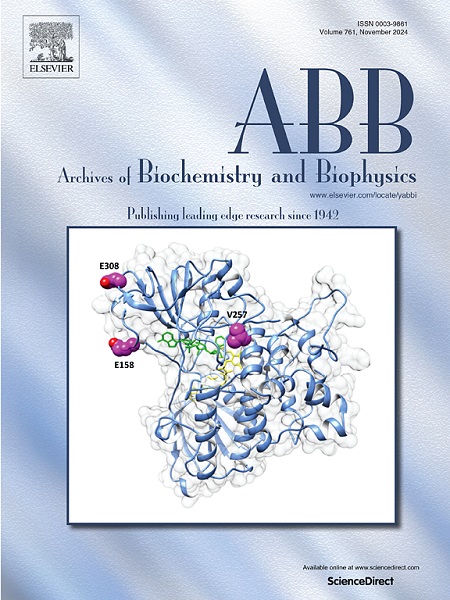MD simulations for rational design of high-affinity HDAC4 inhibitors – Analysis of non-bonding interaction energies for building new compounds
IF 3.8
3区 生物学
Q2 BIOCHEMISTRY & MOLECULAR BIOLOGY
引用次数: 0
Abstract
This study investigates the contributions of non-bonding energy (NBE) to the efficacy of four HDAC4 co-crystallized inhibitors (HA3, 9F4, EBE, and TFG) through 100ns Molecular Dynamics (MD) simulations. These inhibitors contain hydroxamic acid (HA3, 9F4, EBE) or diol (TFG) as zinc-binding groups. In PDBs 2VQJ and 2VQM, the HDAC4 catalytic domain is in the 'open' conformation, while in PDBs 4CBT and 6FYZ, the same is in the 'closed' conformation. We identified HA3 as a weaker inhibitor because of the unfavorable NBE contributions from its carbonyl fragment (FR3) and hydroxamic fragment (FR1). To enhance NBE efficacy, we designed novel HA3 analogs (H01–H16) by introducing diverse fragments (–CF3, 2-hydroxyacetic acid, -NH-CH2-, 5-fluoro-2-phenyl pyrimidine, and chloroquinoline moieties). MD simulations revealed promising analogs (H02, H07, H08, H15) with strong NBEs and stable ligand-zinc retention (2.07–2.33 Å). These analogs exhibited strong relative binding free energies within their catalytic sites, highlighting their potential as novel HDAC4 inhibitors. The current study provides medicinal chemists with insights into non-covalent interactions, identifies key fragments for optimization, and offers a rational design strategy for developing more effective HDAC4 inhibitors.

高亲和HDAC4抑制剂合理设计的MD模拟——构建新化合物的非键相互作用能分析。
本研究通过100ns分子动力学(MD)模拟研究了非键能(NBE)对四种HDAC4共晶抑制剂(HA3、9F4、EBE和TFG)的影响。这些抑制剂含有羟肟酸(HA3, 9F4, EBE)或二醇(TFG)作为锌结合基团。在PDBs 2VQJ和2VQM中,HDAC4催化结构域为“开放”构象,而在PDBs 4CBT和6FYZ中,HDAC4催化结构域为“封闭”构象。我们发现HA3是一种较弱的抑制剂,因为它的羰基片段(FR3)和羟肟片段(FR1)对NBE有不利的贡献。为了提高NBE的疗效,我们设计了新的HA3类似物(H01-H16),通过引入不同的片段(- cf3, 2-羟基乙酸,- nh - ch2 -, 5-氟-2-苯基嘧啶和氯喹啉部分)。MD模拟显示,类似物(H02, H07, H08, H15)具有较强的NBEs和稳定的配体锌保留率(2.07至2.33 Å)。这些类似物在其催化位点表现出较强的相对结合自由能,突出了它们作为新型HDAC4抑制剂的潜力。目前的研究为药物化学家提供了非共价相互作用的见解,确定了优化的关键片段,并为开发更有效的HDAC4抑制剂提供了合理的设计策略。
本文章由计算机程序翻译,如有差异,请以英文原文为准。
求助全文
约1分钟内获得全文
求助全文
来源期刊

Archives of biochemistry and biophysics
生物-生化与分子生物学
CiteScore
7.40
自引率
0.00%
发文量
245
审稿时长
26 days
期刊介绍:
Archives of Biochemistry and Biophysics publishes quality original articles and reviews in the developing areas of biochemistry and biophysics.
Research Areas Include:
• Enzyme and protein structure, function, regulation. Folding, turnover, and post-translational processing
• Biological oxidations, free radical reactions, redox signaling, oxygenases, P450 reactions
• Signal transduction, receptors, membrane transport, intracellular signals. Cellular and integrated metabolism.
 求助内容:
求助内容: 应助结果提醒方式:
应助结果提醒方式:


